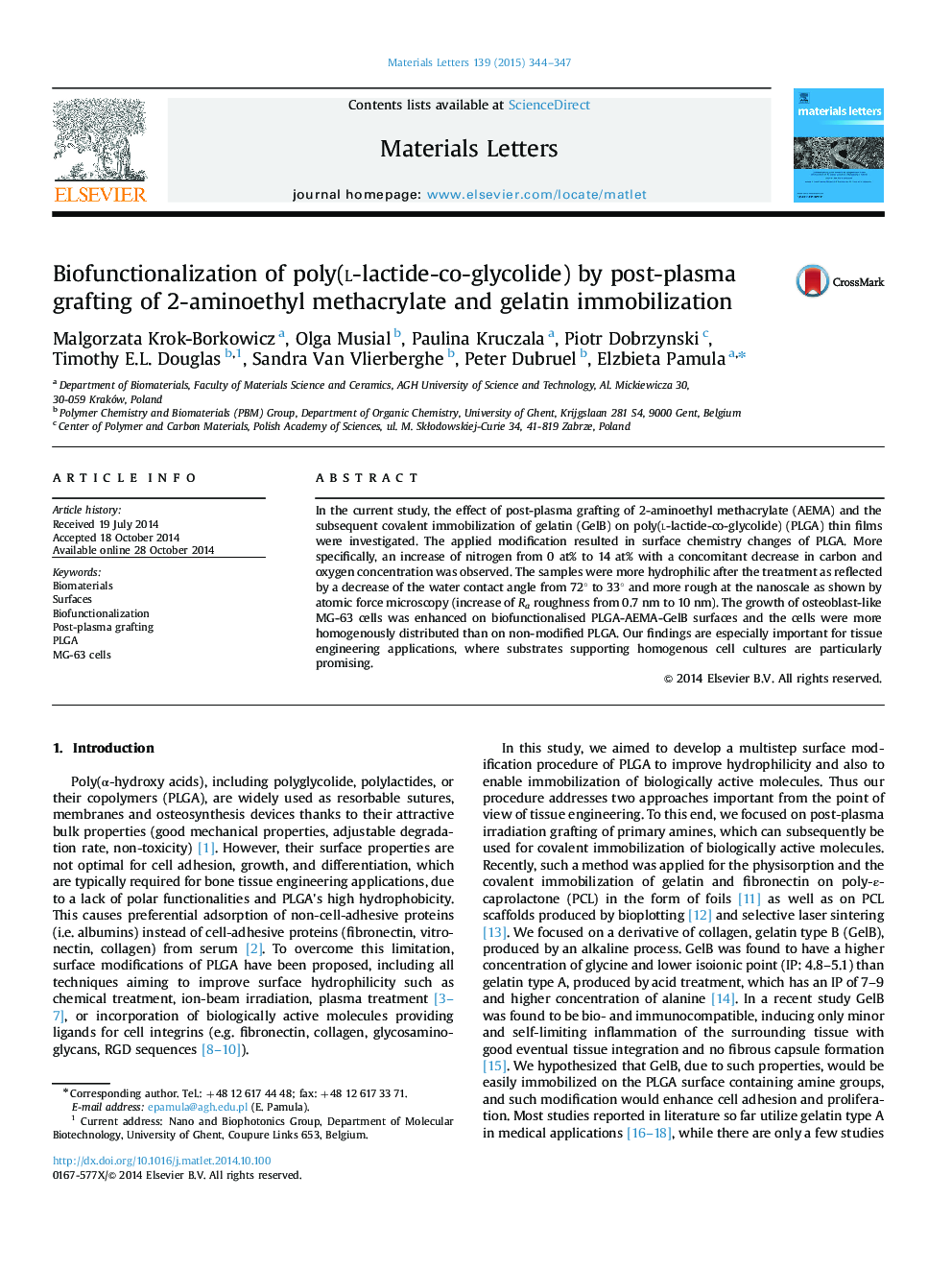| Article ID | Journal | Published Year | Pages | File Type |
|---|---|---|---|---|
| 1643592 | Materials Letters | 2015 | 4 Pages |
•Poly(L-lactide-co-glycolide) (PLGA) surfaces were biofunctionalized with gelatin B.•First step: post-plasma grafting of 2-aminoethyl methacrylate.•Second step: covalent immobilization of gelatin B.•Modification resulted in changes in surface chemistry, wettability and roughness.•Osteoblast-like MG-63 cell growth is enhanced, cell distribution is homogeneous.
In the current study, the effect of post-plasma grafting of 2-aminoethyl methacrylate (AEMA) and the subsequent covalent immobilization of gelatin (GelB) on poly(l-lactide-co-glycolide) (PLGA) thin films were investigated. The applied modification resulted in surface chemistry changes of PLGA. More specifically, an increase of nitrogen from 0 at% to 14 at% with a concomitant decrease in carbon and oxygen concentration was observed. The samples were more hydrophilic after the treatment as reflected by a decrease of the water contact angle from 72° to 33° and more rough at the nanoscale as shown by atomic force microscopy (increase of Ra roughness from 0.7 nm to 10 nm). The growth of osteoblast-like MG-63 cells was enhanced on biofunctionalised PLGA-AEMA-GelB surfaces and the cells were more homogenously distributed than on non-modified PLGA. Our findings are especially important for tissue engineering applications, where substrates supporting homogenous cell cultures are particularly promising.
